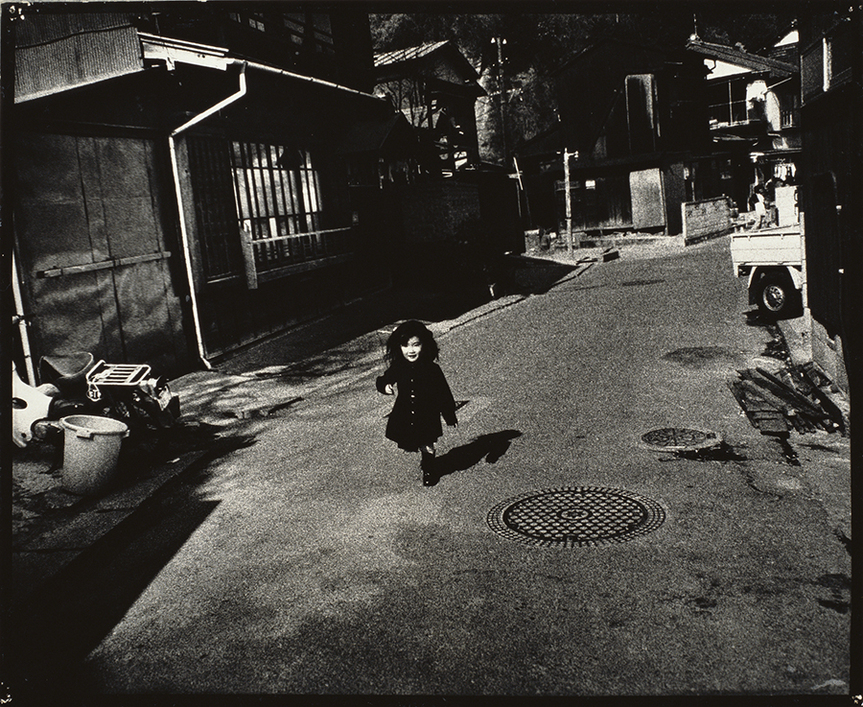
R
E
V N
E
X
T
Ishiuchi Miyako, one of the most significant Japanese female photographers to emerge from postwar Japan, currently has a major exhibition “Postwar Shadows” at Los Angeles’s J. Paul Getty Museum, which surveys nearly 40 years of her work.
Born in Kiryu, in 1947, the year of Japan’s “peace constitution,” Ishiuchi spent her formative years in Yokosuka, a Japanese city with a large American presence where a vital naval base was established in 1945. She took up photography as her means of personal expression in 1975 after studying textile design at Tama Art University and quitting school prior to graduation. Born as Fujikura Yōko, Ishiuchi assumed her mother’s maiden name as her professional identity.
Much of her work since the 1970s has been about her past, interweaving between the personal and the political. She gained recognition immediately for her work, earning honors extremely rare for a woman in Japan’s then-overwhelmingly male photographic sphere. In 1979, she was included in the exhibition “Japan: A Self Portrait” at the International Centre of Photography in New York, the only woman among 18 men. In 2005, she represented Japan at the Venice Biennale.
Ishiuchi’s first effort with a camera was a sober inquiry into Yokosuka, where she and her family lived from 1953 to 1966. Haunted perhaps by her childhood brooding memories of the place, tainted by fear and disgust of the American presence, she returned in 1976 to address some of these personal issues. Using money her father had saved for her wedding, Ishiuchi financed the print production and culminated her first publication, Yokosuka Story (1976–77), which she named after a Japanese pop song.
During the 1970s, a large number of Japanese cities were occupied by American naval bases, and with it came the insidiousness and seductions of Americanization. Japan itself was struggling with their own metamorphosing culture and economy. In Yokosuka Story, Ishiuchi drew upon this dynamic instability as well as her own internal tension. She created prints with tilted horizons and intense contrast. The works were dark in spirit, their grain is thick and insistent, like a veil of psychic soot. In one image from Yokosuka Story, a doll-like girl, perhaps recalling young Ishiuchi—whom as a child often walked pass a red-light district on her way to school—looks smilingly at the photographer in a deliberately skewed city street. Although the image was taken in full sunlight it conveys a mood that is haunting.
In Ishiuchi’s subsequent series such as “Apartment” (1977–78), “Endless Night” (1978–80) and “1.9.4.7.” (1988–89), the way she often inserts herself in her works become more apparent, suffusing them with palpable empathy. “Apartment,” for example, is inspired from her childhood experience of living with her family in a haphazardly constructed building in Yokosuka, inhabiting a tiny apartment with an earthen floor and communal bathroom. “Endless Night” began when Ishiuchi photographed a lone woman in cramped derelict apartments in Tokyo and Yokohama. Through this process of photographing her, Ishiuchi discovered that some of Tokyo’s abandoned buildings—like the one her subject was living in—inns and private accomodations that were formerly brothels. These structures became Ishiuchi’s focus in “Endless Night.”
In 1987, on Ishiuchi’s 40 birthday, the photographer was inspired to document time by capturing marks left on people’s bodies who were born on her birth year, 1947. She began approaching friends also born that year to pose for her, taking specifically photos of their hands and feet. The collection of images culminated into “1.9.4.7.”—depicting bodily imperfections such as wrinkles, calluses and hangnails—foreshadowed her later, more powerful series “Scars” (1991–2002), a stunning set of photographs of scars caused by accidents, wars and illnesses. Ishiuchi considered them to be reminders of past trauma and pain, evoking memory that the skin retains on its surface and likens them to photographs: “I cannot stop taking photographs of scars because they are so much like a photograph. . .They are visible events, recorded in the past. Both the scars and the photographs are the manifestation of sorrow for the many things which cannot be retrieved and for love of life as a remembered present.”
Perhaps it was these words that led her to photograph her mother’s skin and face shortly before she died in 2000. In “Mother’s” (2000–05), along with her personal effects—such as old shoes, girdles and used lipstick—Ishiuchi created a body of beautiful emotive images. I believe it is within Ishiuchi’s artistic nature to bear witness to surfaces, whether bodily or architectural, and the histories and stories behind them.
In Ishiuchi’s most recent work in the exhibition at the J. Paul Getty Museum, there is a particularly feminine perspective toward the way she captures artifacts—from the Hiroshima Peace Memorial Museum—worn by women the day the US dropped an atomic bomb on Hiroshima in 1945. “ひろしま/ hiroshima” (2007–14) intentionally includes the word Hiroshima in Hiragana, a Japanese writing system that women used extensively in previous eras. Photographed in color on a light box, the artifacts such as a woman dress, printed life size if not larger, doubles as a rippling translucent skin, purplish-brown as a bruise. With shoulders frayed and sleeves splayed, the dress seems to be floating against the white light from behind, a released spirit, in the form of an individual woman’s fate.
Running in conjunction with this comprehensive exhibit on Ishiuchi’s works is “The Younger Generation: Contemporary Japanese Photography,” which features photographs by five contemporary Japanese women artists: Kawauchi Rinko, Onodera Yuki, Otsuka Chino, Sawada Tomoko and Shiga Lieko. It is a credit to J. Paul Getty Museum to place this exhibit alongside that of Ishiuchi as a reminder of how women’s place in Japan’s photography scene has changed.
Billy Kung is photo editor at ArtAsiaPacific.



